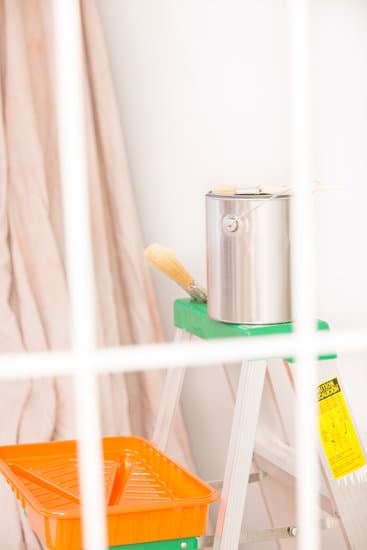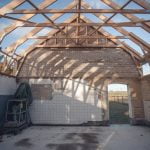Homeowners are often eager to know if their home improvement expenses can be deducted on their taxes. This article will delve into the intricacies of claiming home improvement deductions and provide valuable information on how it can affect your tax return. It is essential to understand the eligibility criteria, what constitutes a home improvement, and how to document and substantiate your expenses for tax purposes.
When considering whether or not your home improvement expenses are deductible, it is crucial to grasp the key factors that come into play. Certain guidelines govern this deduction, and knowing them beforehand can help you make informed decisions about which expenses are eligible for tax benefits.
In this comprehensive article, we will explore the distinction between eligible and ineligible home improvement expenses. We will also dive deep into the IRS guidelines and requirements for claiming these deductions. By understanding the ins and outs of these rules, you can confidently navigate through the tax code while maximizing your tax benefits.
Stay tuned as we debunk common misconceptions and myths surrounding home improvement deductions on taxes. We will address frequently asked questions that homeowners often have and provide clear explanations backed by IRS regulations.
Additionally, this article will provide practical tips and strategies for ensuring you optimize your tax benefits when claiming home improvement expenses. Through case studies featuring real-life examples, readers will gain insights into how homeowners have successfully maximized their deductions by undertaking specific home improvements.
Is home improvement deductible on taxes? Join us as we explore every aspect of this question, including its pros, cons, and impacts on your overall tax return. By gaining a deeper understanding of this topic, you’ll be better equipped to make informed financial decisions regarding your home improvements.
What is Home Improvement and How Does it Affect Your Tax Return?
Home improvement refers to any changes or upgrades made to a residential property with the intention of enhancing its value, functionality, or appearance. This can include renovations, repairs, additions, landscaping, and other improvements. While home improvement expenses are generally not directly deductible on taxes, they can indirectly impact your tax return in several ways.
One way that home improvements can affect your tax return is through the increase in property value. When you make improvements to your home, such as adding a new bathroom or updating the kitchen, it can increase the overall value of your property. This can be advantageous if you sell your home in the future, as any profit made from the sale may be eligible for exclusion from capital gains tax.
Additionally, certain energy-efficient home improvements may qualify for tax credits. The federal government offers various tax incentives for homeowners who make energy-efficient improvements to their homes. These credits can help reduce your overall tax liability and save you money in the long run.
It’s important to note that not all home improvement expenses are eligible for deductions or credits. For example, regular maintenance items like painting or replacing a broken window are generally not considered deductible expenses. It’s crucial to understand which expenses qualify and meet specific criteria set by the Internal Revenue Service (IRS) before claiming them on your tax return.
| Expense Type | Tax Deductibility |
|---|---|
| Renovations | Typically not deductible |
| Repairs | Generally not deductible unless they relate to a business or rental property |
| Additions | Not immediately deductible but may impact capital gains when selling the property |
| Energy-efficient improvements | Potential for tax credits |
When it comes to claiming home improvement expenses on your tax return, it’s essential to keep detailed and accurate records of all expenditures. This includes receipts, invoices, contracts, and any other relevant documentation. These records will help substantiate your claims and ensure that you can properly support any deductions or credits you may be eligible for.
Key Factors to Consider Before Claiming Home Improvement Deductions on Taxes
When it comes to claiming home improvement deductions on your taxes, there are several key factors that you need to consider before doing so. By understanding these factors, you can ensure that you are making the most informed decisions and maximizing your tax benefits. Let’s explore some of the key factors you should consider before claiming home improvement deductions:
- Eligibility: Not all home improvement expenses are eligible for tax deductions. The IRS considers certain criteria when determining if an expense qualifies as a deductible home improvement. For example, the improvement must be considered substantial and add value to your home or prolong its useful life. Additionally, the improvement must be made on your primary residence and not a rental property or vacation home.
- Documentation: Properly documenting your home improvement expenses is crucial when claiming deductions on your taxes. This includes keeping receipts, invoices, contracts, and any other relevant documents related to the improvements made. It is important to have proof of the expenses incurred in case of any audit by the IRS.
- Timeframe: Another factor to consider is the timeframe in which the home improvements were made. Generally, only expenses incurred within a specific time period can be deducted in a single tax year. It is important to keep track of the dates when the improvements were completed as this will determine when you can claim them on your tax return.
| Eligible Expenses | Ineligible Expenses |
|---|---|
| Adding insulation | Cosmetic enhancements such as painting walls |
| Installing energy-efficient windows | Replacing existing appliances without substantial upgrades |
| Building a new addition to your home | Repairing existing damages or maintenance work |
| Upgrading electrical wiring for safety purposes | Landscaping or exterior improvements for aesthetic purposes only |
Eligible vs. Ineligible Home Improvement Expenses
When it comes to claiming home improvement deductions on your taxes, it is crucial to understand which expenses are eligible and which are ineligible. This in-depth analysis will provide clarity on the types of expenses that can potentially be deducted.
In general, eligible home improvement expenses include those that increase the value of your property or prolong its useful life. These expenses can typically be deducted if they meet certain criteria set by the IRS. Examples of eligible home improvement expenses may include:
- Renovations and Additions: Costs incurred for renovating or adding onto your existing home may be deductible. This includes projects such as kitchen remodels, bathroom renovations, room additions, or building a deck.
- Energy-Efficient Upgrades: Certain energy-efficient improvements such as installing solar panels, energy-efficient windows, or upgrading insulation can qualify for tax deductions under specific circumstances.
- Accessibility Modifications: Expenses related to making your home more accessible for individuals with disabilities may also be eligible for deductions. This includes adding ramps, widening doorways, or installing grab bars.
On the other hand, there are several types of expenses that are generally considered ineligible for tax deductions. It’s important to keep in mind these ineligible expenses when determining what you can deduct from your taxes. Some examples of ineligible home improvement expenses include:
- Repairs and Maintenance: Routine repairs or maintenance tasks required to keep your property in good condition are typically not deductible. This includes activities such as painting a room, fixing a leaky faucet, or replacing broken tiles.
- Aesthetic Enhancements: Expenses incurred purely for aesthetic purposes are usually not deductible either. This could refer to projects like landscaping improvements solely meant to increase the curb appeal of your property.
- Personal Use Items: Items primarily used for personal enjoyment rather than long-term use or property value enhancement cannot be claimed as deductible home improvement expenses. For instance, purchasing new furniture or a home entertainment system would not qualify.
It is essential to keep meticulous records and documentation of your eligible home improvement expenses in order to substantiate your deductions during tax filing. Save receipts, contracts, invoices, and any other relevant documents related to the expenses you incurred. Additionally, it’s advisable to consult with a qualified tax professional or review IRS guidelines to ensure compliance with the specific requirements for claiming these deductions.
Understanding the difference between eligible and ineligible home improvement expenses will help homeowners make informed decisions about which projects may qualify for tax deductions. By staying well-informed and organized throughout the process, individuals can potentially maximize their tax benefits while avoiding any confusion or penalties associated with incorrect claims.
How to Document and Substantiate Your Home Improvement Expenses for Tax Purposes
When it comes to claiming home improvement deductions on your taxes, it is crucial to document and substantiate your expenses properly. This not only helps you maximize your tax benefits but also ensures compliance with IRS guidelines. Here are some key steps to take when documenting and substantiating your home improvement expenses:
- Keep Detailed Records: Create a system for organizing all receipts, invoices, contracts, and other relevant documents related to your home improvement projects. It is essential to have proof of payment and documentation that clearly identifies the nature of the work done.
- Evidence of Property Ownership: In order to claim deductions for home improvements, you need to establish that you own the property. Be prepared to provide supporting documents such as mortgage statements or property tax records.
- Record Before and After: Take pictures or videos documenting the condition of your property before and after the improvements. This evidence can be valuable in demonstrating the extent of the work done and its impact on the value or functionality of your home.
Utilizing Contractor Documentation
Contractor documentation plays a vital role in substantiating your home improvement expenses. Make sure to obtain written contracts from all contractors hired for the project. These contracts should outline details such as scope of work, materials used, costs incurred, and payment terms. Additionally, keep any change orders or modifications made during the project.
It is also advisable to request contractor invoices that clearly specify labor costs and material expenses separately. This breakdown can help distinguish between eligible deductions for labor versus non-deductible expenses like furniture purchases or decorative items.
Saving Energy Efficiency Certifications
Many homeowners undertake energy-efficient improvements, such as installing solar panels or upgrading insulation systems. Keep copies of any certifications or reports that validate these energy-efficient features installed in your home. These certifications can entitle you to additional tax credits or deductions.
Navigating the Tax Code
When it comes to claiming home improvement deductions on your taxes, it is important to understand and abide by the guidelines set forth by the IRS. The tax code can be complex and overwhelming, but with a clear understanding of the rules, you can confidently navigate through the process.
According to the IRS, in order for a home improvement expense to be eligible for a tax deduction, it must meet certain criteria. One of the key factors is that the improvement must be considered as adding value to your home or prolonging its useful life.
This means that repairs or maintenance expenses would typically not qualify for a tax deduction. Examples of eligible home improvements include adding a new room, renovating a bathroom or kitchen, installing energy-efficient windows or insulation, or building an addition to your property.
Another important guideline provided by the IRS relates to personal versus rental properties. If you are making home improvements on a property that you use solely for personal purposes, then any deductions will typically fall under personal tax deductions. However, if you are making improvements on a rental property that you own, then these expenses may qualify as business expenses and can be deducted accordingly.
In order to properly substantiate your home improvement expenses for tax purposes, it is crucial to keep detailed records and documentation. This includes invoices, receipts, contracts, permits, and any other supporting documents that demonstrate the costs incurred for the improvement project. It is also recommended to take pictures before and after the project is completed as additional evidence.
By familiarizing yourself with the IRS guidelines on home improvement deductions and ensuring that your expenses meet all necessary criteria, you can maximize your potential tax benefits. It is always advisable to consult with a tax professional or accountant who specializes in this area to ensure compliance with all applicable laws and regulations. Remember, accurate record-keeping is key when it comes to claiming deductions on your taxes.
Common Misconceptions and Myths about Home Improvement Deductions on Taxes
The Misconception of Deducting All Home Improvement Expenses
One common misconception about home improvement deductions on taxes is that all home improvement expenses can be deducted. However, this is not always the case. It is important for homeowners to understand that not all types of home improvements are eligible for tax deductions. In order to qualify for a deduction, the IRS has specific requirements that must be met.
The Myth of Increasing Tax Liability through Home Improvements
Another myth surrounding home improvement deductions is the belief that making improvements to your home will increase your tax liability. This misconception stems from a misunderstanding of how the tax code works. While it is true that increasing the value of your home may impact certain aspects of your taxes, such as property taxes, it does not necessarily mean that you will have a higher tax liability overall.
Misunderstanding the Timing of Deductions
One more common misconception is related to the timing of deductions for home improvements. Some homeowners believe that they can deduct the full cost of their home improvement project in the year it was completed. However, this is not always true. Depending on the type and nature of the improvement, it may need to be depreciated over several years according to IRS guidelines.
It is crucial for homeowners to educate themselves and seek professional advice when it comes to understanding these misconceptions and myths about home improvement deductions on taxes. By having a clear understanding of what can and cannot be deducted, as well as how timing may affect deductions, homeowners can make informed decisions when improving their homes and filing their taxes.
Maximizing Your Tax Benefits
Understanding the Importance of Proper Documentation
When it comes to claiming home improvement expenses on your taxes, one key aspect that cannot be emphasized enough is the importance of proper documentation. In order to maximize your tax benefits, it is crucial to maintain thorough records and ensure that you have all the necessary documentation to substantiate your claims. This includes receipts, contracts, invoices, canceled checks, and any other relevant documents that prove the expenses incurred for your home improvements.
Categorizing Your Home Improvement Expenses
To effectively claim home improvement deductions on your taxes, it is essential to properly categorize your expenses. The IRS has specific guidelines for different types of home improvements and how they should be classified for tax purposes. Common categories include:
- Repairs: These are typically classified as ordinary maintenance tasks required to keep your property in good condition. Examples include fixing a leaky roof, repairing broken windows, or replacing a faulty electrical system.
- Upgrades: These are considered improvements that enhance the value or functionality of your property beyond its original condition. Examples may include adding a swimming pool, installing solar panels, or renovating a kitchen or bathroom.
- Energy-efficiency improvements: To encourage homeowners to invest in energy-saving upgrades, certain energy-efficient home improvements may qualify for special tax credits.
By properly categorizing your expenses, you can ensure that you are maximizing your potential tax benefits and accurately reporting them on your tax return.
Consulting with a Tax Professional
While it can be beneficial to educate yourself about the rules and regulations regarding home improvement deductions on taxes, consulting with a professional tax advisor can provide valuable guidance tailored specifically to your individual situation. A tax professional can help navigate through complex IRS guidelines and ensure that you are taking full advantage of all available deductions.
In addition to providing expert advice on claiming home improvement expenses, a tax professional can also assist in identifying potential red flags or triggers for an audit. This can contribute to your peace of mind, knowing that you are handling your taxes correctly and reducing the risk of any negative consequences.
By following these tips and strategies, homeowners can maximize their tax benefits when claiming home improvement expenses. Remember to maintain proper documentation, categorize expenses accurately, and consult with a tax professional for personalized advice and guidance. With careful planning and attention to detail, you can take full advantage of the deductions available to you and potentially reduce your overall tax liability.
Case Studies
Many homeowners have successfully maximized their tax deductions by strategically utilizing home improvements. By understanding the rules and regulations set forth by the IRS, individuals can make informed decisions about which home improvement expenses are eligible for deduction.
One real-life example of maximizing tax deductions through home improvements is the case of John and Sarah. They purchased an older home and decided to make several energy-efficient upgrades, including installing solar panels, upgrading their windows, and insulating their attic. These improvements not only enhanced the comfort and value of their home but also qualified them for various tax credits and deductions.
Through the Residential Renewable Energy Tax Credit, which allows taxpayers to claim a credit for a portion of their qualified solar panel system costs, John and Sarah were able to deduct 26% of the installation expenses from their federal taxes. Additionally, because they opted for energy-efficient windows that met specific criteria outlined by the IRS, they were eligible for a credit under the Nonbusiness Energy Property Credit.
Another example involves Mark and Emily, who decided to convert a spare room in their house into a dedicated home office as they transitioned to working from home. By doing so, they were able to deduct a portion of their mortgage interest payments as well as property taxes attributable to this space – expenses that would not have been deductible if it had remained a regular room.
It is important to note that these examples are not exhaustive but rather serve as illustrations of how homeowners can maximize tax deductions through strategic home improvements. Each individual’s situation might be unique, so it is crucial to consult with a tax professional or seek guidance from the IRS publications relevant to your circumstances.
By exploring real-life case studies like these, homeowners can gain insights into how certain types of home improvement projects can result in significant tax benefits. With proper planning and documentation along with compliance with IRS guidelines, homeowners can confidently pursue necessary home improvements while also potentially lowering their tax liability.
Conclusion
In conclusion, whether home improvement expenses are deductible on taxes depends on certain factors and circumstances. While there may be potential tax benefits to claiming these deductions, it is important to carefully consider the pros and cons before making a decision.
One of the key factors to consider is whether the home improvement expense qualifies as a deductible expense according to the IRS guidelines. It is crucial to understand the difference between eligible and ineligible expenses in order to make an informed decision.
Additionally, homeowners should also take into account the documentation and substantiation requirements set by the IRS. Keeping thorough records and gathering all necessary documents will help ensure that the deduction claim is accurate and can withstand any potential audits or inquiries from the IRS.
On the pro side, claiming home improvement deductions can help reduce taxable income and potentially lower overall tax liability. This can result in significant savings for homeowners, especially if they have made substantial improvements to their homes.
However, there are also cons to consider. For example, some homeowners may not have sufficient eligible expenses to make claiming these deductions worthwhile. Additionally, it is important to note that deducting these expenses could potentially affect other aspects of your tax return, such as capital gains when selling your home.
Ultimately, it is recommended that homeowners consult with a tax professional or accountant who can provide personalized advice based on their specific situation. They can help navigate through the complexities of the tax code and help determine whether claiming home improvement deductions would be beneficial or not.
Frequently Asked Questions
How much of home improvement is tax deductible?
The amount of home improvement expenses that are tax deductible depends on the nature and purpose of the improvements. Generally speaking, home improvements that are considered necessary for the maintenance, repair, or renovation of a primary residence may be eligible for tax deductions. For example, if you install a new roof or replace a faulty heating system, these expenses may be deductible.
However, it’s important to note that purely cosmetic upgrades or enhancements typically do not qualify for tax deductions. It is always advisable to consult with a tax professional or refer to the relevant tax laws and regulations to determine what specific home improvement expenses may be eligible for deduction.
What are the tax breaks for home improvements in 2023?
As the question refers specifically to 2023, it is important to highlight that tax laws can change from year to year, and any specifics regarding tax breaks for home improvements in 2023 would depend on the legislation in place at that time. Thus, without knowledge of the future tax laws and regulations applicable in 2023, it is not possible to provide accurate information about potential tax breaks for home improvements during that particular year.
To obtain up-to-date information about any available tax breaks for home improvements in 2023 or any future year, individuals should consult with a qualified tax professional or refer to official governmental resources such as IRS publications.
Can you write off new flooring on your taxes?
The ability to write off new flooring on your taxes depends on various factors related to its purpose and usage within your property. In general, if new flooring is installed solely for aesthetic purposes, it would not qualify as a deductible expense on your taxes since it does not contribute directly to the maintenance or improvement of your property’s condition.
However, if the flooring installation is part of broader renovations aimed at improving energy efficiency (such as replacing old carpeting with energy-efficient options) or addressing health concerns (such as replacing mold-infested surfaces), you may be able to claim certain portions of those costs as deductions on your taxes. To accurately assess whether you can write off new flooring expenses, it is advisable to consult with a tax professional or refer to relevant tax guidelines for your jurisdiction.

I’m thrilled to have you here as a part of the Remodeling Top community. This is where my journey as an architect and remodeling enthusiast intersects with your passion for transforming houses into dream homes.





